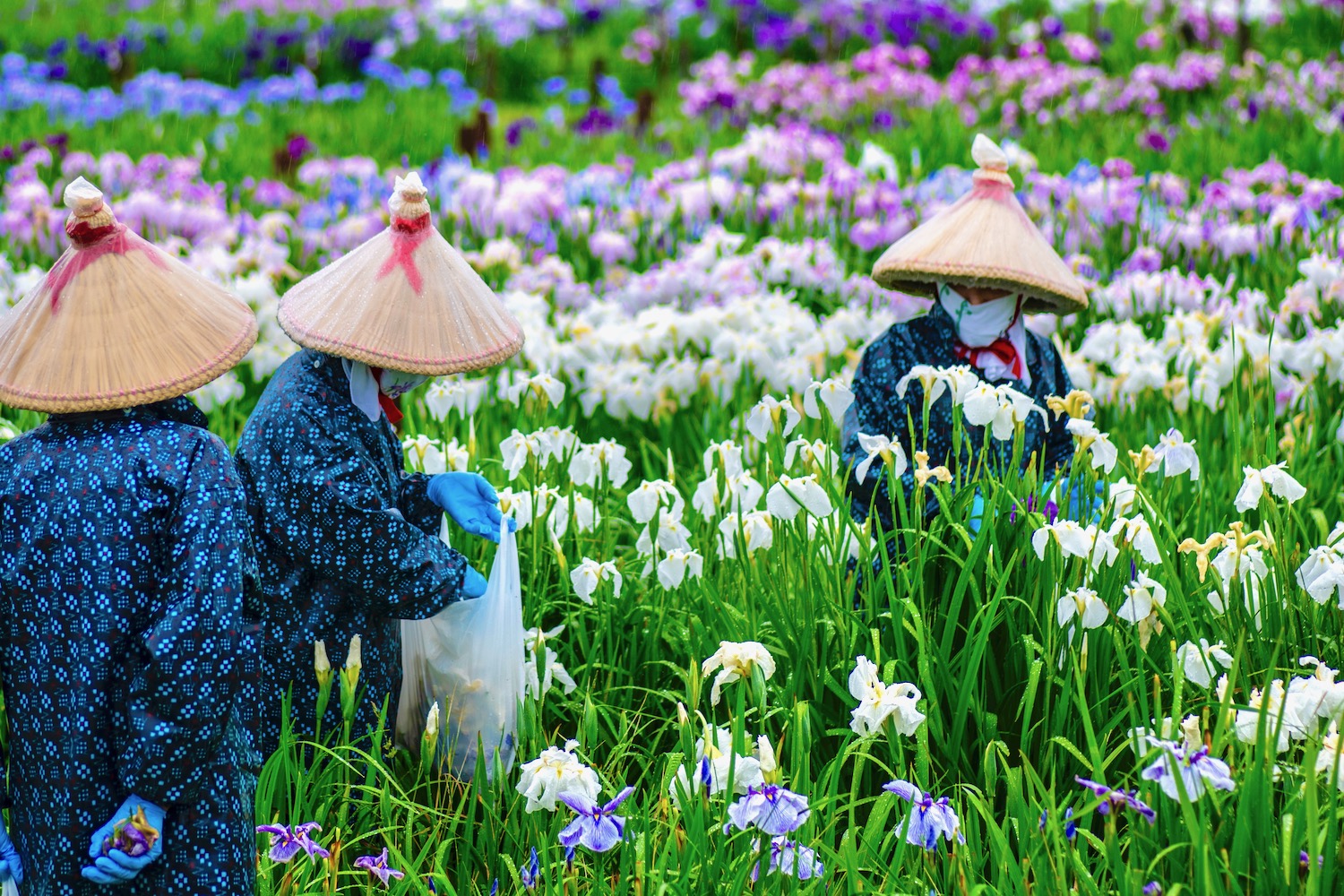I’ve made no bones about the fact that while I love sakura season, I am an equal-opportunity lover of Japan’s many types of flowers. From tsubaki in January to ajisai in July, there’s not a Japanese flower I don’t absolute love.
Qualifying individual species, however, can be difficult—but I’ll try today with ayame, or Japanese irises. I’d say that these are without a doubt Japan’s most elegant flower, even if they stand tall and strong for just a few weeks out of every year.
Whether you’re looking for recommendations on where to see irises in Japan, or simply want to know about the ayame‘s meaning in Japanese culture, you’re in the right place.
Irises Are Japan’s Most Underrated, Elegant Flower
Even before I visited the Japan iris park (more on that spectacular experience in a moment), I’ve found myself hypnotized by the particular beauty of Japan’s irises. This started one day at Tokyo’s Nezu Museum, where Ogata’s Irises screen was on display. Depicting seemingly hundreds of purple flowers juxtaposed against emerald greenery and a gold background, it was a simple, effective image that pierced my mind.
It’s also reflective of the way that irises in Japan are planted these days, at least within the confines of most Japanese gardens. Whether along waterways or beneath raised paths, ayame (and their cousins hanashobu and kakitsubata—I will just use ayame within this post) effuse an understated elegance that will make you feel like you’re walking into ancient artwork.
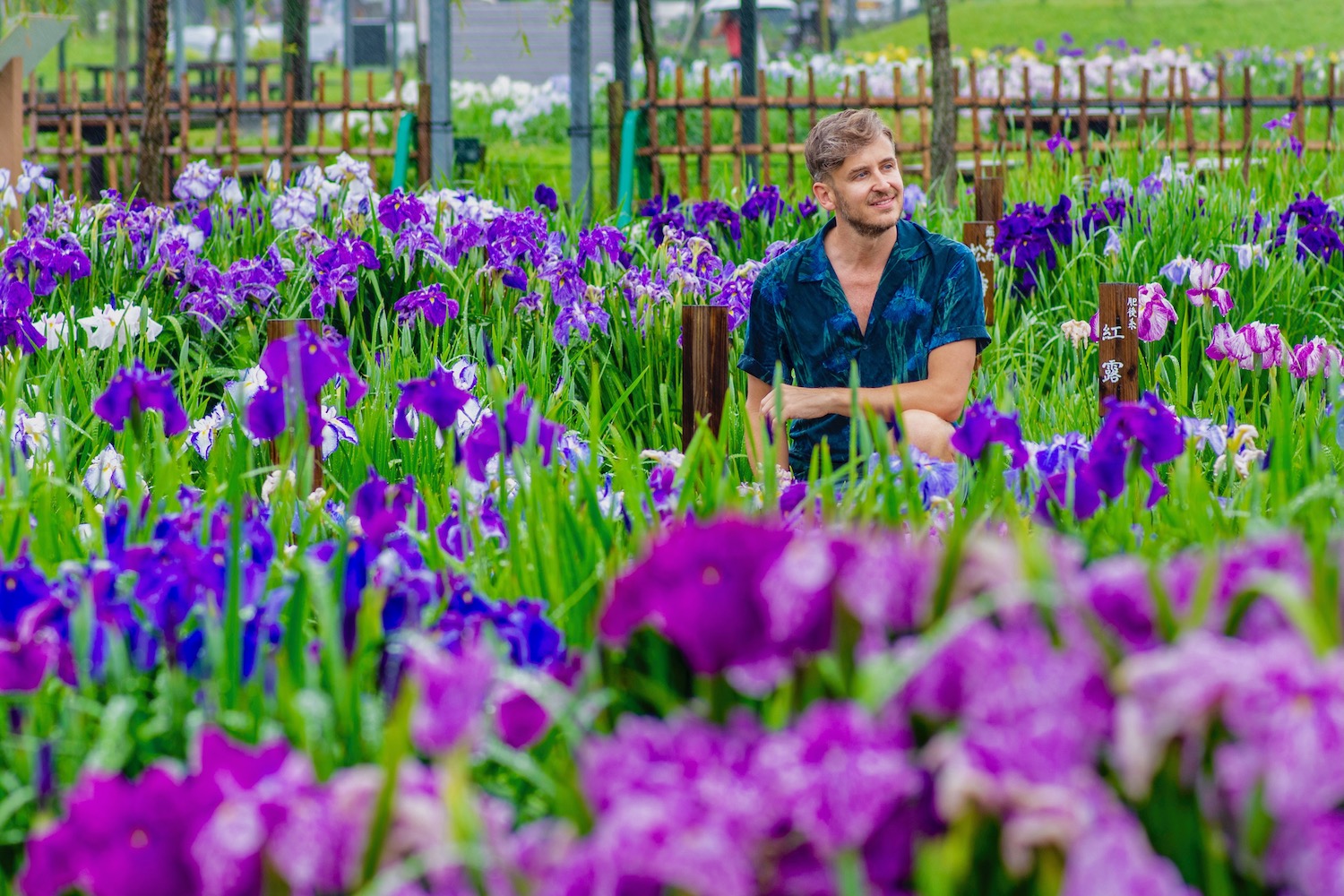
My Favorite Places to See Irises in Japan
Suigo Sawara Ayame Park, Chiba
Although I had seen Japanese irises on dozens of occasions prior to 2025, my visit to Suigo Sawara Ayame Park (in Katori, Chiba, about 30 minutes by car from Narita Airport) was without a doubt the most impressive display. This was in spite of (or maybe because of) the fact that it was raining torentially when I was there.
BONUS: If you visit the Chiba iris park and will have your own set of wheels, make the short drive to Suigo Itako Iris Park just over the border of Ibaraki prefecture. You won’t regret it—trust me!
Kanazawa Castle and Kenroku-en Garden
Prior to my visit to the formal iris festival, my favorite place I’d seen Japanese irises was in Kanazawa. I enjoyed them both in the moat just to the southwest of the Kanazawa Castle Ruins, as well as across the way in Kenroku-en, which might just be the most spectacular of Japan’s “three great gardens.”
Meigetsu-in, Kamakura
If you happen to visit Meigetsu-in temple in Kamakura in June, it will almost for sure be so that you can enjoy ajisai, or hydrangeas. However, do make sure to take your time exploring, as there are various iris species on-site as well, albeit not as conspicuously as the blue puffs.
Meiji Shrine, Tokyo
Likewise, most tourists who visit Meiji Shrine (which is practically in the heart of Harajuku, and is overall one of Japan’s most popular tourist attractions) are not bound for a Japan iris garden. But again, if you’re here in mid-to-late June, you might as well enjoy the ayame on-site.
Along random streets and roadsides
Although often not in as great of quantities or arranged as dramatically as in gardens or at temple, many roadsides throughout Japan boast beautiful irises. If you decide to rent a car and drive in rural areas of Japan, this will be especially evident. Don’t be shy about stopping to take pictures!
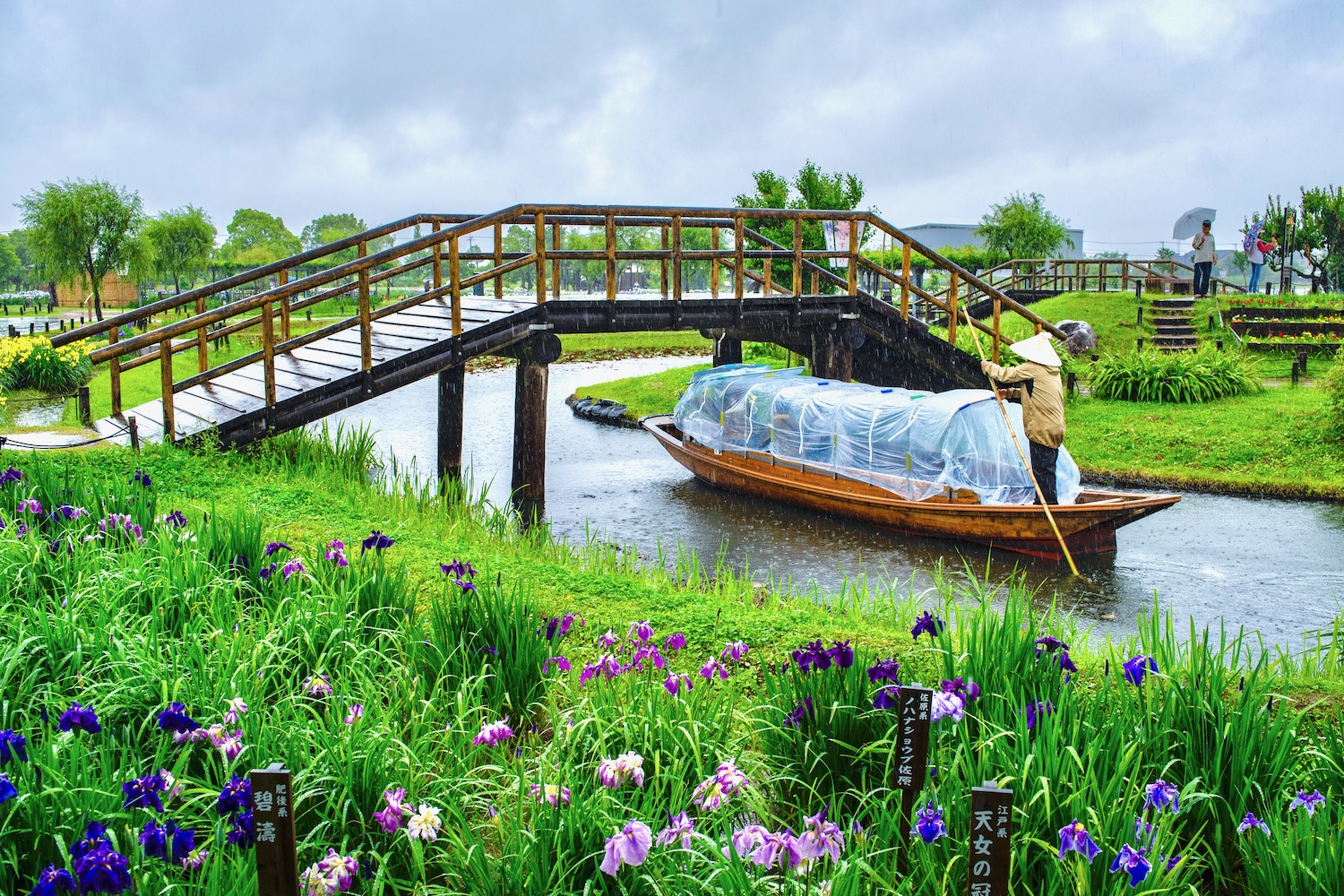
When Do Irises Bloom in Japan?
Although I’ve seen irises in Japan as early as May and as late as August, the “sweet spot” throughout most of the country is about mid-June to mid-July. June is a safe bet if you’re in the greater Tokyo area or in destinations to the west, while heading northward and eastward tends to delay peak bloom until July. If you go very far east in Hokkaido, you might still reliably see irises during the first couple weeks of August.
In terms of the Japan iris festival 2026, dedicated iris parks in Chiba and Ibaraki prefectures (which, if you have a car, are literally just a few minutes away from one another) tend to open in late May and stay open through the end of June. However, as is the case with other flower displays in Japan, you can expect that the actual dates will depend on the bloom, which itself is highly dependent upon weather related to seasonal norms.
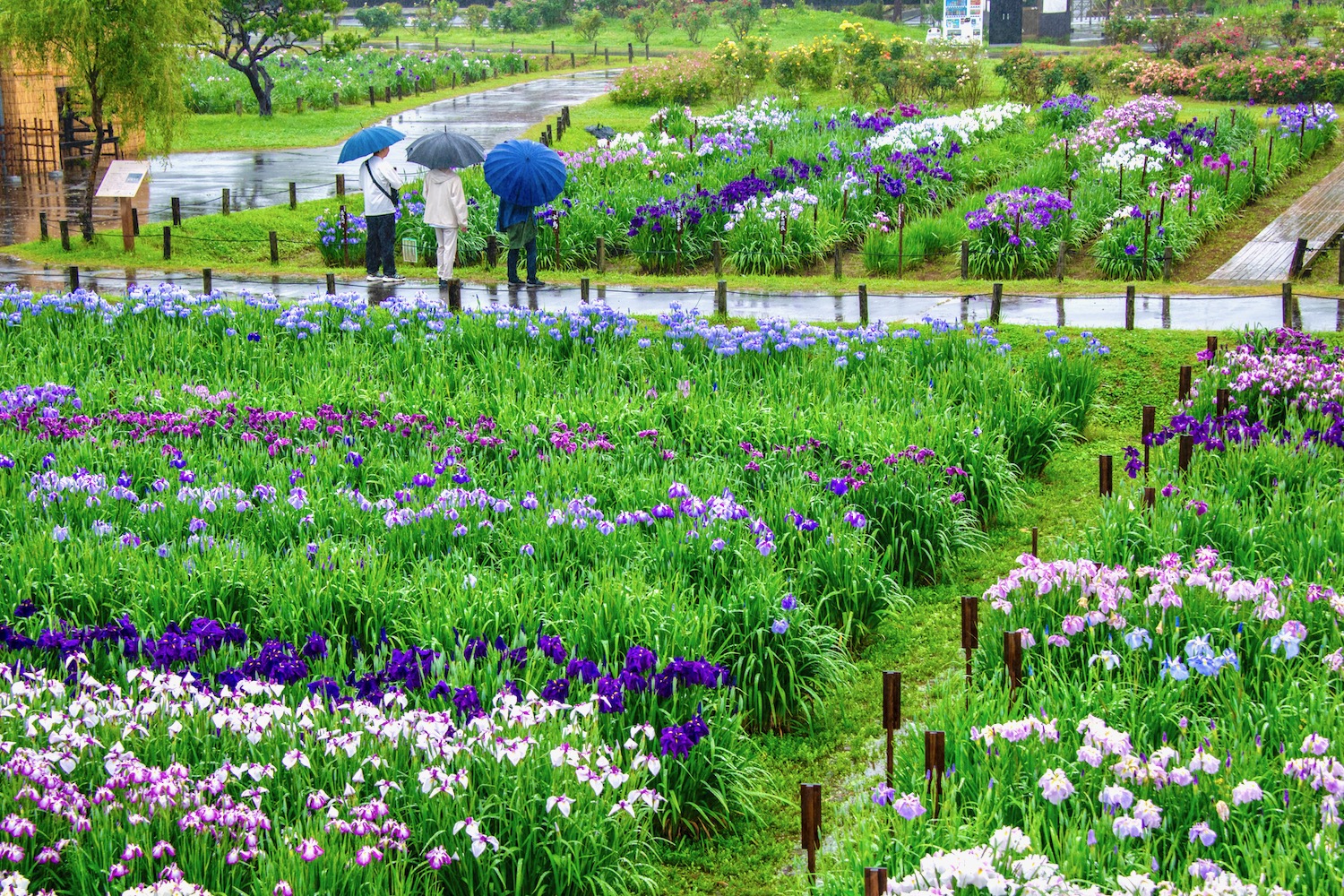
Other FAQ About Where to See Irises in Japan
What is the iris festival in Japan?
The iris festival in Japan is a loosely-defined, festive viewing of irises, specifically at Suigo Itako Iris Park in Ibaraki prefecture and Suigo Sawara Ayame Park in Chiba prefecture. Dates vary based on the year and on blooming conditions, but you can generally expect it to last between about late May and July 1.
What do irises symbolize in Japan?
Irises in Japan don’t symbolize just one things. White irises symbolize purity, while pink and purple flowers can represent both innocence and the warrior spirit, depending on the shade of the petals and the species of iris. Just as these flowers can look different in different context, they can also take on vastly different meanings.
Where do Japanese irises grow?
Irises grow throughout Japan, though large concentrations of them tend to be clustered in certain places. Conveniently, the Tokyo area tends to be a good place for seeing irises, whether in the city at Meiji Shrine in Shibuya, or at iris parks in Chiba prefecture’s Sawara City and Ibaraki prefecture’s Itako city, both of which are near Narita Airport.
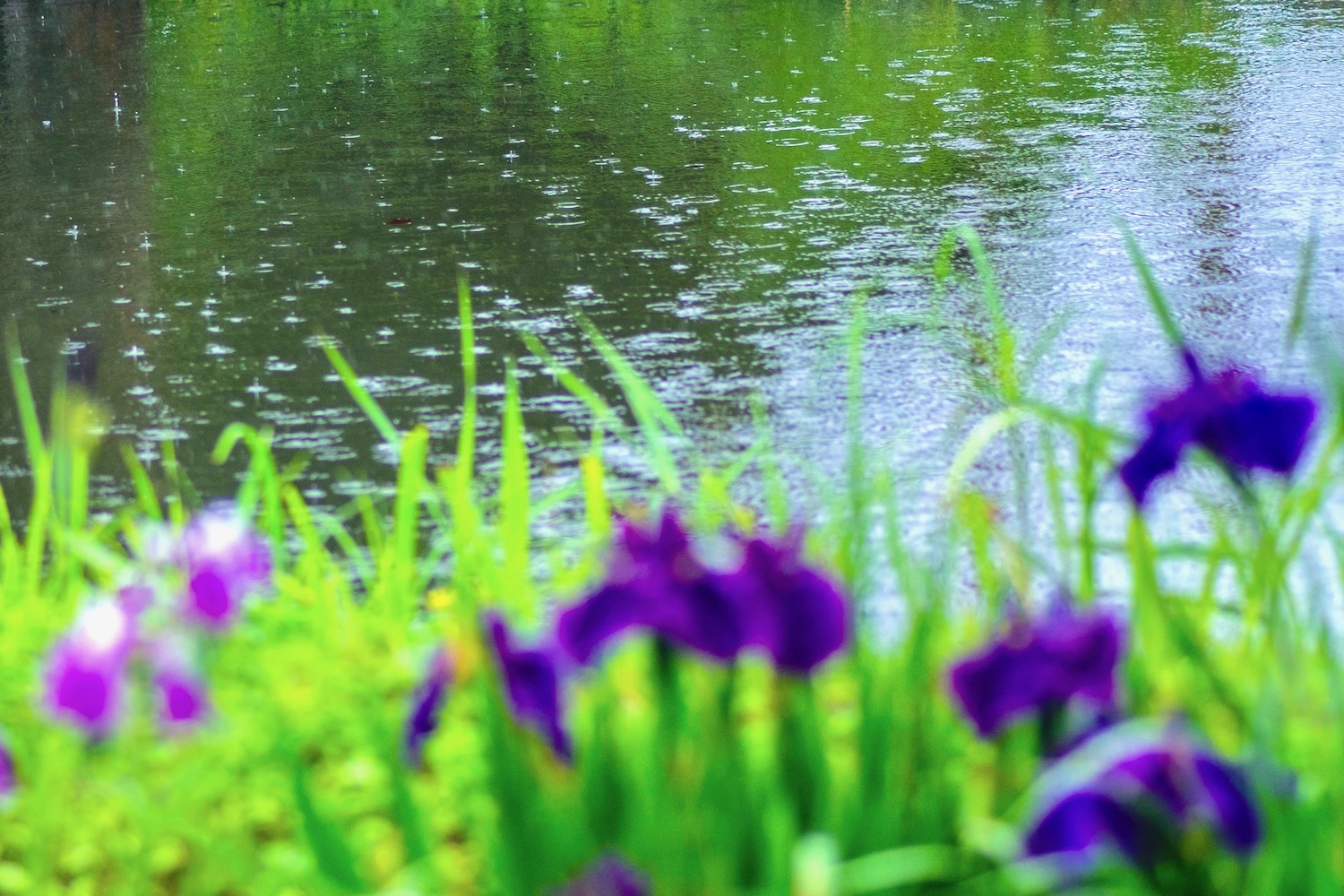
The Bottom Line
Welcome to the wonderful world of irises in Japan. Some of you might be in-country right now and, having seen a stand of ayame on the side of the road, be wondering if there’s a place you can enjoy irises with more pomp and splendor. Others of you may be putting together your first Japan trip but, being pre-existing iris lovers, curious as to whether anywhere along the route you’re planning will be fertile ground for seeing them. Regardless of the circumstance, you’re in the right place. Want to take your Japan iris-hunting trip to the next level? Consider hiring me to plan it!



